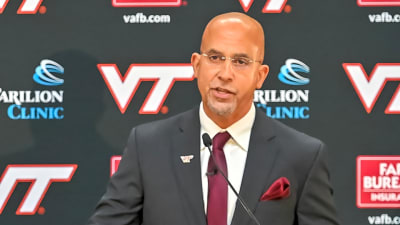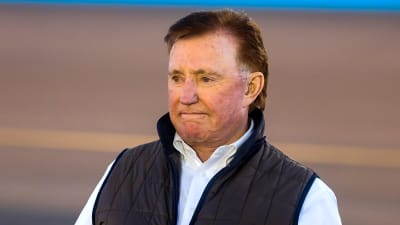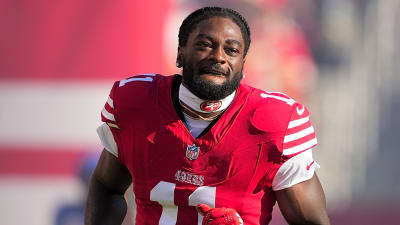Just days before the U.S. Open lit up Queens, another corner of New York City was buzzing with its own exciting tennis athletes. In Harlem’s Howard Bennett Playground, community courts turned into a clinic of movement, laughter, and inspiration.
Boys and girls of all ages and skill levels sprinted through drills, hit forehands with pros, and laughed their way through water balloon games at the WTA Come Play event, presented by Morgan Stanley.
I had the chance to watch it all unfold—and even as someone who spends much of the year covering the sport, this felt different.
The joy on the kids’ faces, the way some gripped their rackets with pure seriousness, and the sense of community all around the event were something special. It reminded me that while the U.S. Open shines on the world stage, the grassroots courts of Harlem carry their own heartbeat.
Judy Murray: Teaching Through Joy
Guiding the day with her trademark enthusiasm was Judy Murray, renowned coach and mother to Grand Slam champions Andy Murray and Jamie Murray.
She didn’t just run drills—she helped create an atmosphere. With the natural sounds of the city flowing through the park and balls flying in every direction, her philosophy was simple: keep it fun.
“Kids need to be introduced to the game in ways that are fun and accessible,” Murray told me as she directed a group of eager participants. “That’s why we use beanbags, balloons, and music. It builds skills without kids even realizing they’re learning.”
Her energy set the tone for the entire afternoon. Even the shyest of kids cracked smiles as Judy clapped along to the beat, urging them to stay active, stay engaged, and most of all, just enjoy their bodies moving.
Asia Muhammad: Connecting Beyond Competition
On the other side of the playground, Asia Muhammad, a doubles standout and longtime presence on tour, was deep in the activities. She traded groundstrokes with advanced juniors and cracked jokes with beginners, giving each child a sense of belonging and making them feel comfortable.
For Muhammad, it was about more than just a clinic. “These kids might not remember every drill,” she said, “But they’ll remember how they felt being here. It’s about creating a positive connection with tennis, and showing them that the sport can be theirs.”
Her sentiments echoed in real time as I watched the kids light up when she offered encouragement, especially the older ones who were clearly trying to prove themselves. They soaked up her tips as if each one could unlock a new level in their games.
Clervie Ngounoue: A Rising Star Giving Back
Joining Muhammad was Clervie Ngounoue, one of the brightest young Americans on tour and a player wise beyond her years. Still only a teenager, she already understands the power of giving back.
“Inspiring kids has always been a priority for me,” she told me. “I want them to know tennis can be fun, but also something they can dream about seriously if they want to. I’m still young too—I haven’t fully grown up—so I love being able to relate to them.”
That ability to connect was evident. One moment, Clervie was crouched down to joke with a group of kids during a break, and the next, she was trading forehands with an advanced player who looked like they’d just met their idol.
When I asked her about the WTA’s broader efforts, Clervie pointed to the newly established maternity fund. “It’s a big progression for us,” she said. “It shows younger girls that women on tour are supported, and it makes the future feel stronger.”
Clervie also reflected on access, something that shaped her own upbringing, “I grew up playing on park courts like these. Having places like this to just go after school and play is everything. That’s why events like this matter so much. It’s not just today—it’s giving kids the materials and opportunities to keep playing.”
More Than Just Tennis
Events like this do not get off of the ground without resources. That’s where Morgan Stanley’s backing makes all the difference.
“We are thrilled to be back in New York with the WTA and bringing the sport of tennis and first-hand access to WTA stars to a really great group of kids right here in our backyard,” said Morgan Stanley Chief Marketing Officer, Jess Schnurr.
“This partnership brings to life exactly why we believe it is so important to invest in the next generation and arm them with the lessons and skills that will help them both on and off the court.”
Corporate partnerships in sports are not all created equal, but the impact Morgan Stanley had was tangible. Equipment, coaches, safe courts, and — most importantly — opportunities flowed from their investment. For the kids in Harlem, it wasn’t built around branding or photo ops. It was about the chance to pick up a racquet, play, and imagine themselves in the world of tennis.
What struck me most throughout the day was how seriously some of the advanced kids took the clinic. They leaned into every rally, eyes locked in on the ball, desperate to leave an impression on the pros.
And yet, the laughter and joy never left the courts. Even the most focused young players found themselves breaking into smiles as Judy turned a simple rally into a fun game, or as Asia celebrated a hot shot with a high five.
As someone standing just outside the lines, I felt lucky to witness it. The energy was infectious. It wasn’t just about hitting forehands and backhands—it was about building confidence, joy, and community through the sport.
Judy summed it up perfectly, “Tennis doesn’t have to start with full courts and scoring. It starts with fun. If kids fall in love with it here, they’ll stick with it.”
A Glimpse Into the Future
By the time the clinic was wrapping up, kids were meeting their parents with sweaty T-shirts, tired legs, and the unmistakable glow of having been a part of something special. Some might go home and put their rackets in the closet until next summer.
Others might start begging their parents for lessons, but each walked away with a story about hitting balls with real WTA players in Harlem, and that kind of inspiration is sure to linger.
For the pros, it is just as meaningful. As Clervie put it, “These events remind us there are things bigger than us. Yes, we compete against each other, but this is about inspiring the next generation and making sure tennis continues to grow.”
Walking away from the courts that evening, I kept thinking about the little boy who smashed forehands like his life depended on it, and the little girl who couldn’t stop giggling while tossing water balloons. Both of them, in their own way, are proof that the future of tennis is alive and well.
Whether it’s Arthur Ashe Stadium or a Harlem playground, the spark that keeps the sport of tennis moving forward is the same: joy, community, and the belief that everyone can come out and play.
More must-reads:
- Five stats that prove Clippers point guard Chris Paul is a first-ballot Hall of Famer
- Dan Lanning addresses speculation about leaving Oregon
- The '2025 NFL draft QB class' quiz
Breaking News
Trending News
Customize Your Newsletter
 +
+
Get the latest news and rumors, customized to your favorite sports and teams. Emailed daily. Always free!








